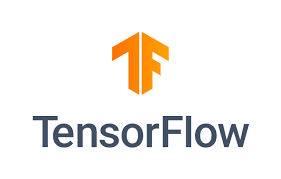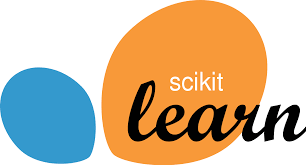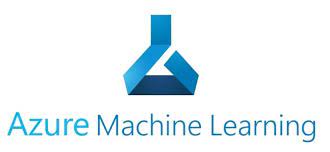POPULAR MACHINE LEARNING TOOLS TO USE
Within Artificial Intelligence, machine learning is the area of study that focuses on creating models and algorithms that allow computers to learn from data and advance based on past performance without requiring explicit programming for each task. Machine learning (ML) leverages data to educate systems to reason and comprehend similarly to people.
This article will discuss the types of machine learning tools, their uses, and the top machine learning tools.
WHAT IS MACHINE LEARNING?
Machine learning is an artificial intelligence application that uses statistical methods to teach computers to learn and make judgments without explicit programming. It is based on the idea that computers can make decisions independently, with minimal help from humans, by using data to identify patterns.
Within artificial intelligence, it is a subset. It is the study of imbuing machines with the capacity for self-learning and program development so that they behave and make decisions more like humans.
Very little human involvement is involved in this process—no intentional programming. Throughout, the machines’ experiences inform the automation and improvement of the learning process.
TYPES OF MACHINE LEARNING
SUPERVISED MACHINE LEARNING
Training a model using a “Labelled Dataset” is supervised learning. Datasets with labels contain parameters for both input and output. Algorithms that use supervised learning learn to map points between inputs and accurate outputs.
UNSUPERVISED MACHINE LEARNING
Unsupervised learning is a machine learning approach where an algorithm uses unlabeled data to find links and patterns. Unsupervised learning does not require giving the algorithm labeled target outputs, in contrast to supervised learning.
Finding underlying patterns, similarities, or clusters in the data is frequently the main objective of unsupervised learning. These findings can be applied to tasks such as dimensionality reduction, data exploration, and visualization.
REINFORCEMENT MACHINE LEARNING
The reinforcement machine learning algorithm is an approach to learning that engages with the environment by generating actions and identifying mistakes. The most essential features of reinforcement learning are trial and error and delay.
With this technique, machines can automatically ascertain the best course of action inside a given environment to optimize performance. Applications involving decision-making in unexpected contexts require this kind of learning.
SEMI-SUPERVISED MACHINE LEARNING
A machine learning technique called semi-supervised learning uses labeled and unlabelled data since it operates between supervised and unsupervised learning. It’s beneficial when getting labeled data requires a lot of money, time, or resources.
When dealing with expensive or time-consuming datasets, this method can be helpful. Semi-supervised learning is the preferred method when training or learning from labeled data necessitates using specific abilities and resources.
- Related Topic: Stallion Group Clarifies Issues With UBA
USE CASES OF MACHINE LEARNING
- Numerous sectors, including e-commerce, finance, and healthcare, heavily rely on machine learning. Knowledge of machine learning can lead to numerous job options in various domains.
- Intelligent systems that can make decisions and predictions based on data can be created via machine learning. This can assist businesses in improving their operations, coming up with new goods and services, and making more competent judgments.
- An essential tool for data analysis and visualization is machine learning. It enables you to draw conclusions and trends from massive datasets, which help you comprehend intricate systems and formulate wise choices.
- The discipline of machine learning is expanding quickly and offers a wealth of exciting research and development opportunities. Gaining knowledge in machine learning will enable you to remain current with the most recent findings and advancements in the field.
MACHINE LEARNING TOOLS
Below are lists of popular amazing machine learning tools:
1. TENSOR FLOW

Created by Google, TensorFlow is an open-source machine learning tool that gives users access to various resources, tools, and libraries to help them create, train, and implement their machine-learning models. Predictive machine learning, reinforcement learning, computer vision, natural language processing, and other solutions are supported.
For more straightforward problems, TensorFlow does provide specific pre-built models; nevertheless, for the most part, developers must closely collaborate with the code of a specific model to fully control the training process.
KEY FEATURES OF TENSOR FLOW
- A collection of programming abstractions for creating and executing computational graphs is what makes up TensorFlow’s core. It enables the definition of computations as a directed acyclic graph (DAG), where nodes represent mathematical operations and edges are the tensors that flow between them.
- As its official high-level API for neural networks, TensorFlow integrates Keras. Offering a more user-friendly and intuitive interface simplifies the process of creating and training deep learning models.
- TensorFlow Lite is a condensed version of TensorFlow for mobile and embedded applications. It makes on-device machine learning possible, enabling the local execution of models on mobile devices for tasks like speech and picture recognition.
2. PYTORCH
An open-source program called PyTorch helps develop machine learning and deep learning models. The platform provides neural networks, tensor computing, and various machine learning tools and frameworks.
PyTorch also comes with two more wrappers, PyTorch Lightning and PyTorch Ignite, which are mainly intended to increase research capabilities and reduce the amount of redundant code.
KEY FEATURES OF PYTORCH
- PyTorch facilitates imperative and intuitive programming by using a dynamic computation graph. This makes debugging and experimentation easier because the graph is created when actions occur.
- The primary data structures in PyTorch are called tensors, representing multi-dimensional arrays comparable to NumPy arrays. Many mathematical operations, such as addition and multiplication, can be carried out on tensors using PyTorch.
- The autograd module in PyTorch efficiently facilitates gradient-based optimization for tensor operations, particularly for model training. Backpropagation in neural networks requires this.
3. SCIKIT-LEARN

A popular open-source Python machine learning tool is called Scikit-Learn (sklearn). It offers practical and intuitive tools for various machine learning applications, such as data preprocessing, regression, clustering, dimensionality reduction, model selection, and classification.
Because of its many methods, ease of use, and thorough documentation, Scikit-Learn is widely utilized in academic and industrial settings. Both novices and seasoned machine learning practitioners will find it to be an invaluable resource.
KEY FEATURES OF SCIKIT-LEARN
- Scikit-Learn provides a user-friendly, intuitive, and straightforward API. This uniformity makes it easier to transition between various methods and models.
- Many supervised learning methods, including decision trees, support vector machines, logistic regression, linear regression, and more, are included in Scikit-Learn.
- Numerous unsupervised learning methods are also included in the library, including dimensionality reduction, association rule learning, and clustering (e.g., K-means, hierarchical clustering).
- Scikit-Learn provides tools for both model selection and evaluation, such as grid search and cross-validation methods for model selection and metrics for measuring model performance (e.g., accuracy, precision, recall, F1-score).
- Many preprocessing methods, including scaling, normalization, encoding categorical variables, and feature selection, are available in Scikit-Learn. These methods are crucial for preparing data for models based on machine learning.
4. JUPYTER
You may create and share documents with live code, equations, graphics, and narrative text using the open-source web application Jupyter Notebook. It is extensively employed in statistical modeling, machine learning, data analysis, and visualization, among other applications.
Jupyter Notebook is a robust and adaptable tool that makes interactive data analysis, research, and collaboration easier across various fields, particularly data science and machine learning.
KEY FEATURES OF JUPYTER
- You can perform each code cell execution using interactive computing with Jupyter Notebook. It is ideal for experimentation and iterative development since it allows you to view the outcome of each code block as you run it.
- Plots, charts, music, video, text, and interactive widgets are just a few of the many types of material that can be displayed in Jupyter Notebook. Effective communication and data and result visualization are made possible by this capability.
- Even though Julia, Python, and R are the main languages for which Jupyter Notebook was created, it can support many more programming languages using kernels. Languages like Python, R, Julia, Scala, and more can be interfaced using kernels.
- If a notebook is exported as HTML, PDF, or plain code files, it can easily be shared with others. Jupyter Notebook, JupyterHub, and JupyterLab are platforms that facilitate team collaboration and sharing.
- Direct creation of dynamic and interactive visualizations within the notebook is made possible by integrating well-known data visualization tools like Matplotlib, Seaborn, Plotly, and Bokeh.
5. AZURE MACHINE LEARNING

With a focus on security, Azure Machine Learning provides developers with everything they need to create, test, and implement their machine learning models.
With tools for data preparation, model training and development, model validation, and ongoing model monitoring and management, its collaborative drag-and-drop design guides developers through the entire machine learning process.
Furthermore, the tool lets users create their own predictive analytic model by visually connecting data sets and modules without programming.
KEY FEATURES OF AZURE MACHINE LEARNING
- It offers a cooperative setting where you can manage and arrange your machine learning resources, including experiments, models, datasets, and more.
- It is a graphical toolkit that eliminates the need for writing code to build, test, and implement machine learning models. It lets you design and visualize machine learning pipelines by allowing you to drag and drop components.
- An API to communicate with Azure ML services is offered by the Python Software Development Kit (SDK). It can automate several steps in the machine learning lifecycle and develop, maintain, and implement machine learning models.
- It is a tool with features for feature engineering, data transformation, and data wrangling that aids in cleaning and preparing data for analysis.
6. VERTEX AI
Vertex AI, another product of Google, streamlines several machine learning workflow procedures so customers may train, host, and utilize their models to conclude massive amounts of data.
Although Vertex AI has pre-trained models, users can utilize Python-based toolkits such as PyTorch, scikit-learn, and TensorFlow to create their models.
Organizations will find it easier to develop and use ML models at scale using Vertex AI’s integrated and effective ML platform. Utilizing the infrastructure and knowledge of Google Cloud, it provides a potent suite of tools for contemporary machine learning operations.
KEY FEATURES OF VERTEX AI
- An integrated development environment (IDE) with a user interface for creating, honing, and implementing machine learning models. It has tools for evaluation, hyperparameter adjustment, model training, and data exploration.
- A service that organizes and automates the many steps of the machine learning workflow through the creation, deployment, and management of ML pipelines. It makes it simple to share and reuse pipeline components.
- A function that helps with dataset versioning and management, promoting data governance, teamwork, and reproducibility in machine learning projects.
7. WEKA

Weka provides tools for data preparation, classification, regression, clustering, association rule mining, and visualization. It is a free collection of machine learning methods for data mining applications.
This machine learning tool uses a fully automated approach to examine the hyperparameter settings for many algorithms and select the most recommended one whenever a data set is fed into it.
KEY FEATURES OF WEKA
- Weka provides a user-friendly graphical user interface (GUI) that makes it simple for users to create machine learning models, explore and analyze data, and visualize the outcomes.
- Weka offers a large selection of tools for preprocessing data, such as features for feature selection, data transformation, and cleaning. In doing so, the data is better prepared for further machine learning activities.
- Numerous techniques for classification and regression, including k-nearest neighbors, random forests, decision trees, and support vector machines, are included in Weka.
- Weka facilitates using multiple clustering algorithms, such as expectation-maximization (EM), hierarchical clustering, and k-means. Unsupervised learning uses clustering to find naturally occurring groups in the data.
8. KERAS

A Python deep learning framework available for free is called Keras. Though François Chollet initially worked on it as a stand-alone project, TensorFlow eventually included it as a high-level API. Using Keras’s intuitive and straightforward interface, creating, training, and deploying neural network models is easy.
In academic and industrial settings, machine learning and deep learning applications such as computer vision, natural language processing, reinforcement learning, and more are commonly implemented with Keras. Further solidifying its use and popularity is its connection with TensorFlow.
KEY FEATURES OF KERAS
- With Keras, users can quickly develop and prototype neural network models thanks to its high-level, user-friendly API. Its simple design and ease of usage are well-known.
- By stacking reusable building components or layers, Keras enables users to develop neural network models. Many structures can be created by adding, removing, or connecting these levels.
- TensorFlow, Theano, and Microsoft Cognitive Toolkit (CNTK) are just a few of the backends that Keras supports. Users can select their favorite backend according to their needs and experience with the ecosystem.
- A wide range of pre-built layers, including normalizing, recurrent, convolutional, and dense layers, are available with Keras for building neural networks.
9. XGBOOST
XGBoost (eXtreme Gradient Boosting) is a well-known open-source machine learning tool for accurate and effective gradient boosting. Because of its reputation for efficiency, performance, and adaptability, this algorithm is frequently employed for various machine learning tasks, especially those involving structured data.
Regression, ranking, binary and multiclass classification, and other machine learning problems are frequently performed with XGBoost. Many data scientists and machine learning professionals use it because of its dependability, efficiency, and adaptability.
KEY FEATURES OF XGBOOST
- The gradient-boosting ensemble learning strategy, which combines several weak learners (usually decision trees) to produce a more robust model, is implemented by XGBoost.
- Model training and prediction may happen quickly because of XGBoost’s efficiency and speed optimizations. It may be parallelized to use many cores during training and is built to handle massive datasets.
- XGBoost offers L1 (Lasso) and L2 (Ridge) regularization algorithms to stop overfitting. It also uses tree trimming to cut out superfluous branches to improve generalization further.
- While building decision trees, XGBoost employs gradient-based optimization to identify the ideal splits. This method helps identify the finest probable trees and enhances the training procedure.
10. PANDAS
A Python package available as open-source, Pandas offers sophisticated data structures and capabilities for data analysis. It’s frequently used in Python for data analysis and manipulation. Pandas make working with structured data easier by facilitating data cleaning, transformation, and analysis.
Numerous fields heavily rely on Pandas, including data analysis, machine learning, economics, statistics, and more. For Python data processing and analysis jobs, it’s the go-to tool because of its broad functionality and ease of use.
KEY FEATURES OF PANDAS
- Pandas provides multiple indexing and selection methods (label-based, integer-based, and boolean indexing) for Series and DataFrame data.
- With the help of Pandas’ robust grouping and aggregation tools, you can perform computations and summary statistics on groupings of data.
- Pandas simplify plotting and visualizing data by integrating with well-known data visualization tools like Matplotlib and Seaborn.
- Pandas offers specialized features for managing time series data, including date and time handling, resampling, and time zone conversion.
- Pandas offers techniques for handling ordered categories, encoding categorical variables, and more. It also facilitates working with categorical data.
- Because Pandas is based on NumPy, it can easily integrate with NumPy arrays and utilize NumPy’s numerical functions.
FREQUENTLY ASKED QUESTIONS
Which machine learning tool is most appropriate for novices?
Because of their simplicity of use, comprehensive documentation, and strong community support, Scikit-Learn and TensorFlow/Keras (with high-level APIs) are frequently suggested for novices. They offer an excellent beginning point for comprehending machine learning principles and creating basic models.
For my project, how can I select the best machine learning tool?
Consider elements like your project’s needs, your experience with the tool, the community’s support, performance, scalability, convenience of use, and so on. Try a few different tools to see which best suits your requirements and tastes.
What part does preprocessing data play in machine learning?
Data preprocessing is known as cleaning, converting, and arranging raw data into a format that can be used to train machine learning models. Ensuring the quality and relevance of data for model training is an essential stage in this process.
CONCLUSION
In conclusion, machine learning tools play a crucial role in artificial intelligence as they facilitate the creation, testing, assessment, and application of machine learning models. They help with every step of the machine learning lifecycle, including selecting, deploying, and monitoring models and preparing and exploring data.
REFERENCES
Builtin.com
Geeksforgeeks.org

